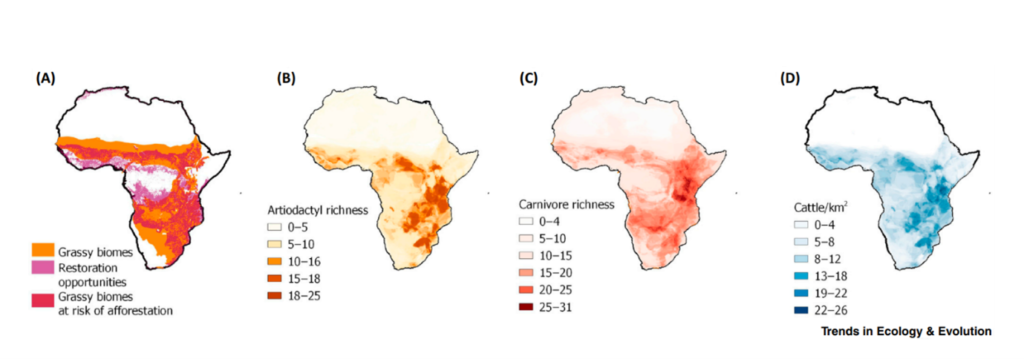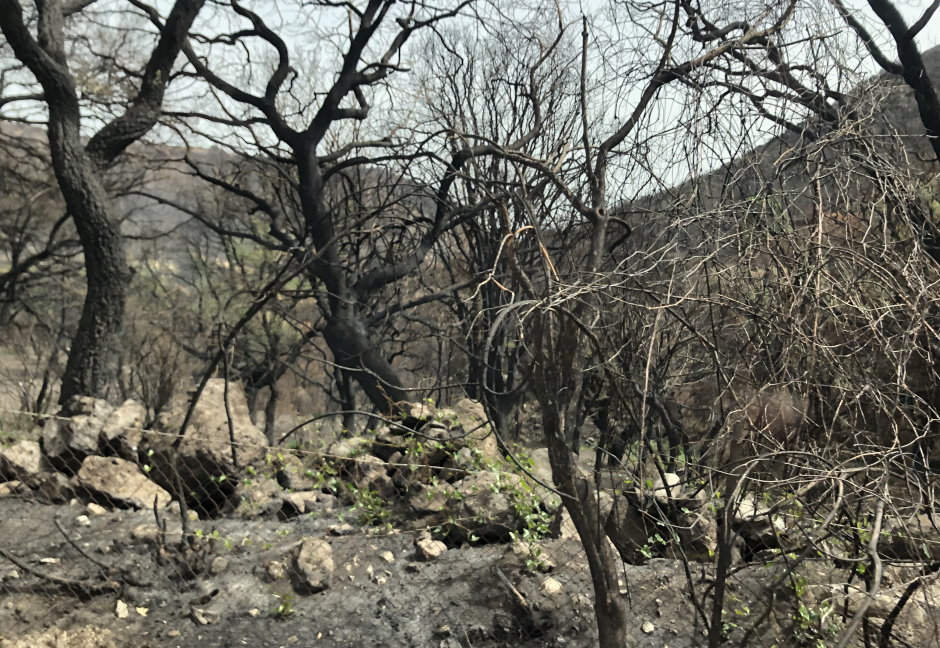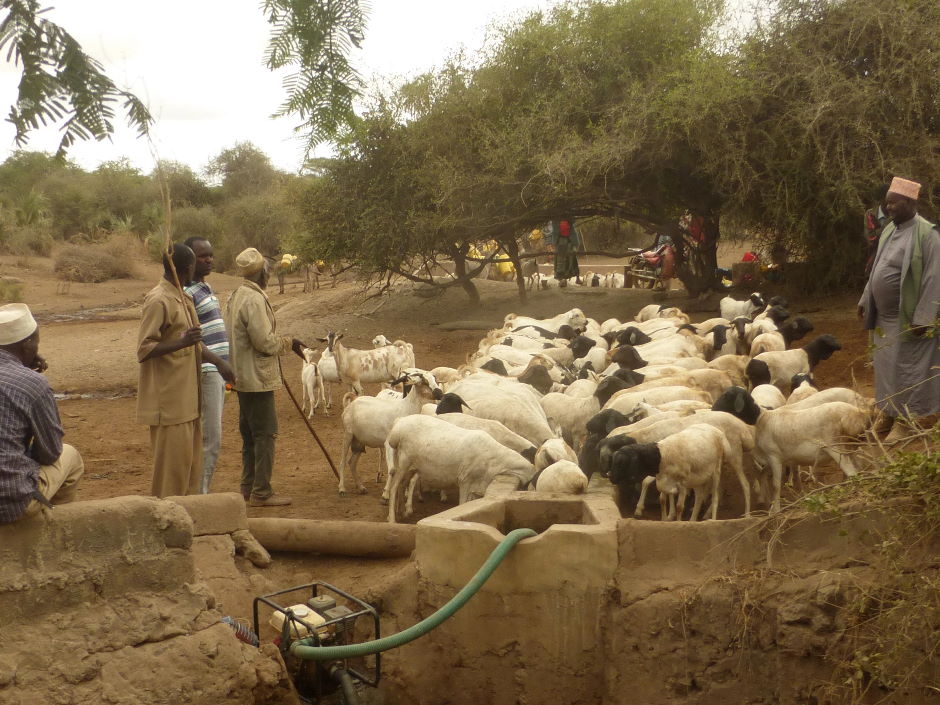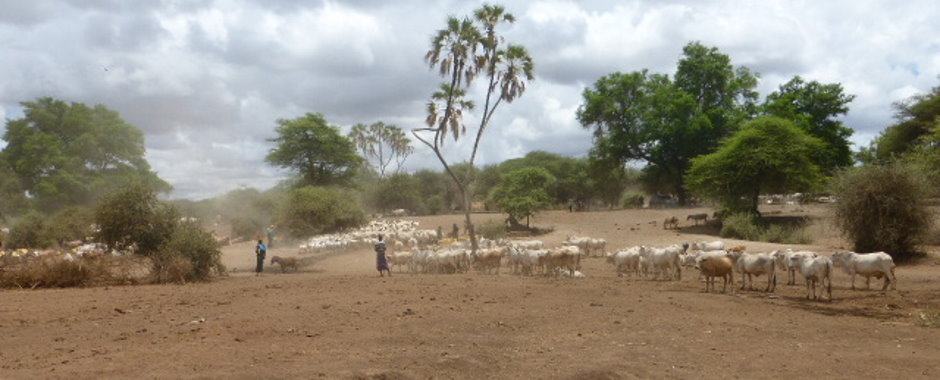Tree planting and ‘nature-based’ solutions are presented as a way to address biodiversity and tackle climate change at a massive scale. But in some cases, these schemes can undermine livelihoods and harm ecologies. This is the first in a series of two blogposts by Ian Scoones, published in the week of the COP15 conference on Biodiversity (read the second post, on net zero and offsetting).
The first phase of the delayed Biodiversity Convention of the Parties (COP15) is happening this week. There has been much talk of linking the twin crises of biodiversity and the climate. Grand plans for protecting 30% of the planet by 2030 have been hailed, and so-called ‘nature-based solutions’ are all the rage.
Massive tree-planting schemes are being suggested, supported through significant new finance for ‘offset’ schemes to meet ‘net zero’ obligations. The areas involved are huge. For example, in 2011 the United Nations’ Bonn Challenge proposed that 350 million hectares of land would be ‘restored’ through tree planting by 2030. National governments and regional blocs also have massive plans for more trees, including notorious projects such as the Sahelian ‘Great Green Wall’. The AFR100 initiative, funded by multiple international donors including the World Bank, has committed to afforesting 100 million hectares in Africa over the coming decade. And not wanting to be outdone, the World Economic Forum is proposing the planting of a trillion trees.
But is this always a good idea? Not necessarily.
Restoration myths
Many of the areas earmarked for tree planting are rangelands. Estimates vary, but many millions of hectares of rangelands have been identified for forest ‘restoration’ by the World Resources Institute based in Washington DC and the Crowther Lab at ETH Zurich. This assumes that these rangelands are ‘degraded’ forests in need of rehabilitation, rather than highly productive, biodiverse ecosystems that support many livestock and people. According to Joseph Veldman and colleagues, such global restoration assessments may massively overestimate the climate mitigation potential of tree-planting schemes.
In a 2019 paper, ‘The trouble with trees’, William Bond and colleagues showed how the areas identified for tree planting overlap with grassy biomes (including rangelands), wildlife species richness and livestock production (see figure below). In fact, as Veldman and colleagues show, 40% of the WRI map – some 1 billion hectares – was focused on grassy biomes, highlighting an ‘inconvenient reality’ for large-scale restoration plans. As Catherine Parr and colleagues argue, tropical grassy biomes remain poorly understood and are under threat. In particular, ‘restoration’ through tree planting in such areas would have major negative consequences for wildlife, biodiversity and pastoral livelihoods.

Source: ‘The trouble with trees: afforestation plans for Africa’, Trends in Ecology & Evolution, 34(11): 963-965
Grassland ecosystems and carbon dynamics
These forest restoration assessments – and resulting interventions, such as the African Forest Landscape Restoration Initiative – spring from a basic misunderstanding of rangeland ecosystems that exist across more than half the world’s surface. This is simply ‘bad science’. Rangelands are what Bond calls ‘open ecosystems’, variegated mixes of trees and grasslands existing together in savannahs and parklands. These are maintained by grazing, fire and human actions, and are some of the most biodiverse areas on the planet.
Grasslands may also fix carbon more effectively than forests, although estimates vary wildly. In the geological past, the expansion of grasslands may have locked up so much carbon it resulted in a cooling of the atmosphere, precipitating an ice age. Grasslands have extensive root systems and high turnover, with dead vegetation matter regularly incorporated into the soil, often assisted by grazers. Grasslands can be more reflective of solar radiation too compared to darker forests, and so may act to cool the earth.
Yet carbon forestry schemes focus on the above-ground biomass, and tree biomass is much more visible and measurable than the poorly-understood underground carbon dynamics among root networks and in the soil. In other words, these are not degraded lands in need of restoration to a ‘natural’ forest.
Forest obsessions
This obsession with closed forests has a long history, seeing grasslands as ‘degraded’ forests, and forests as the desirable protector of environments. Many of the current well-meaning attempts to advocate reforestation replicate colonial discourses, where foresters from northern climes influenced nascent forest departments across the world.
For example, the idea of the taux de boisement normal – the percentage of forest cover required by a ‘civilised’ nation – took hold in the French colonies from the 1800s, and since then tree planting has become part of what Diana Davis describes as a civilising mission to offset ‘desiccation’ and the assumed ravages of desert advance. Equally, the negative description of rangelands as ‘wastelands’ in India has framed attempts at environmental rehabilitation from the colonial era to today.
These basic misunderstandings of rangeland ecologies persist today, and are promoted by the likes of the World Resources Institute, along with multiple well-meaning projects and agencies through their advocacy of ‘forest restoration’. These efforts, reinforced (and in turn commoditised) by the panoply of carbon forestry projects under schemes such as REDD+, and through investment projects available through growing voluntary carbon markets, seen as central to meeting ‘net zero’ commitments globally.
The problems with tree planting in rangelands
So what are the problems with tree planting? Here are seven points (see also this excellent article by Forrest Fleischman and colleagues, as well as a recent paper on India and associated Twitter thread).
Most tree-planting projects focus on exotic, fast-growing trees. These are assumed to produce the most carbon the quickest. But fast-growing trees planted in rangelands can quickly become a problem. Ask any pastoralist in East Africa about the issues they have with the invasive Prosopis juliflora, which was originally introduced by aid programmes to provide fuel wood. Exotic tree planting also eliminates existing grassland ecosystem biodiversity, which has emerged over millennia through the interactions of vegetation and herbivores.
Carbon projects require managed tree planting to claim carbon credits against an assumed degraded baseline. The easiest approach is the planting of large plantations. These are easy to manage and the carbon credits can quickly be calculated and cashed in. But plantations exclude people, livestock and wildlife and can seriously undermine plant biodiversity too. A rush to net zero through tree planting, Oxfam argues in a recent report, could have major implications for land rights and food security.
Rushed planting of trees in unsuitable environments can lead to large losses of planted trees. The incentives to earn a quick buck on carbon credits can result in huge damage. Areas are cleared, trees are planted and then they die, with no benefits to anyone. In the odd calculations of carbon credits, this may have resulted in ‘avoided deforestation’, but the consequence is often the laying waste of environments.
Tree planting in grasslands, aiming for a managed, stable forested area, runs counter to the natural ecosystem dynamics of such areas. In tropical grassy biomes, the amount of trees and grasslands fluctuate. Patches of each increase and decrease because of rainfall, fire and other factors. Imposing a regularised regime of management on such a setting, assuming baselines and calculating carbon gains, makes no sense.
Tree planting schemes where people and animals are excluded can result in the massive build-up of flammable herbaceous material. Without regulated ‘cold burn’ fires, the consequences of forest fires can be devastating, as seen around the world in recent months. This can result in huge losses of carbon – exactly the opposite of the plan.

Water cycles may be disrupted by tree planting schemes, as fast-growing trees need a lot of water to grow. By contrast, grasslands have high levels of infiltration and are important in maintaining hydrological systems. Carbon schemes however do not put a price on water, so trees win out.
The landscape value of tree plantations – serried rows of exotic trees – may be lower than that of long established grassland systems, where cultures of livestock keeping and wildlife use have created a lived-in landscape. Rangelands may be anthropogenically created, but they are not necessarily degraded and in need of rehabilitation.
Enhancing dynamic ecologies: putting people first
Trees are natural elements of grassland landscapes and of course have many benefits for people and environments, providing shade, fruits, browse, leaf litter and so on. In some cases, new planting may be desirable. But it often makes more sense to encourage regrowth of existing trees as part of variegated landscapes, as a route to capturing and sequestering carbon to meet the climate challenge.
“Tree planting should enhance and diversify local livelihoods, avoid the transformation of tropical grasslands and savannahs, promote landscape heterogeneity and biodiversity, and distinguish residual carbon stocks from those derived from reforestation and afforestation.”
Pastoralists know a lot about highly dynamic rangeland environments. As guardians of these rich, open ecosystems, excluding pastoralists and their animals in the name of carbon offsetting and forest rehabilitation can be disastrous, both for people and for the environment. So-called ‘nature-based solutions’ need to involve people first, otherwise they will fail; tree planting is a social and political issue.

So next time you sign up for a ‘carbon offset’ scheme that promises to plant trees somewhere in the world to mitigate the effects on the climate and promote biodiversity, make sure you check the small print. Rather than thinking you can offset your high-carbon lifestyle in a ‘green’ way by buying into a carbon offset tree planting scheme touted as a ‘nature-based solution’, think again. It could do more harm than good.
An earlier version of this article was posted on the PASTRES blog.
Related content
Why carbon offsetting through tree planting won’t help solve the climate crisis

Massive tree plantation means not literally planting trees of our choice or planting few varieties of vegetation. It is a systematic restoration and regeneration of local ecosystem as a whole. For this restoration (1). Soil conservation, (2). Rainwater harvesting (3). Planting the species of grasses, trees, shrubs, herbs, climbers, creepers, roots, bulbs which exist there, (4). Supporting in increased habitation of native fauna and (5). Recreating nature based livelihood options for local people based on their past experience s. And such a holistic approach in tree plantation definitely work as a benefiting factor to all living beings from the particular ecosystem. If we take care of all these and then go for mass plantation it would be give positive results.